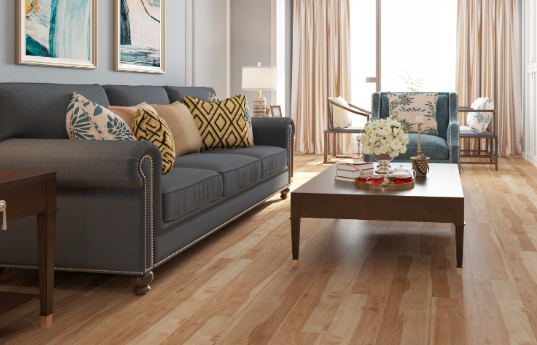Over the past decade, home improvement has evolved from a professional domain into a cultural phenomenon. The rise of social media tutorials, design influencers, and step-by-step online guides has empowered homeowners to tackle renovations with newfound confidence. Among these projects, flooring stands out as one of the most popular—and most misunderstood.
For many, the allure of do-it-yourself flooring lies in creative freedom and cost savings. But beneath the surface (quite literally), there are layers of complexity that can make or break a project’s success.
So, is DIY flooring truly a smart way to personalize your space—or a financial risk disguised as a weekend project?
The Appeal of DIY: Cost, Creativity, and Control
The modern homeowner craves autonomy. Whether it’s designing a custom wall mural or refinishing kitchen cabinets, there’s satisfaction in creating something tangible with your own hands. Flooring—being one of the most visible aspects of a home—offers an especially rewarding payoff.
The benefits seem obvious:
- Cost savings: Avoiding professional labor can save hundreds or even thousands of dollars.
- Customization: DIY allows homeowners to mix materials, patterns, and colors freely.
- Instant gratification: Many modern flooring materials, such as click-lock laminates and vinyl planks, are designed for fast installation without adhesives or nails.
But while these advantages make for a compelling case, they tell only half the story.
The Hidden Challenges Beneath the Surface
Ask any contractor, and they’ll tell you the same thing: the success of flooring depends as much on preparation as it does on installation. And this is where DIY projects often falter.
1. Subfloor Preparation:
Before a single plank or tile is laid, the subfloor must be clean, level, and dry. Even a small imperfection can lead to uneven seams, squeaks, or premature wear. Achieving a perfectly level surface can be deceptively hard without specialized tools.
2. Measurement Errors:
Flooring requires precision. Miscalculations—even as small as a quarter inch—can compound across a room, leaving awkward gaps along walls or doors. Professionals use specialized tools like expansion spacers and laser levels to avoid such errors, while DIYers often rely on hand measurements.
3. Underestimating Time:
A flooring project that looks “simple” on a YouTube tutorial can take far longer in reality. Cutting around corners, thresholds, and fixtures requires patience and skill. A weekend project can quickly stretch into a two-week endeavor, especially for beginners.
4. Warranty Voids:
Many flooring materials come with warranties that require professional installation. A poorly executed DIY job can not only damage the floor but also void its warranty entirely—turning a cost-saving effort into an expensive repair later.
That’s not to say homeowners shouldn’t try—it just means understanding the stakes is key.
The Middle Ground: Hybrid DIY
Interestingly, a new trend has emerged among homeowners who want the satisfaction of DIY without the risk: hybrid installation.
In this approach, homeowners handle some steps—like demolition, prep work, or finishing touches—while leaving the more technical aspects to professionals. This division of labor offers the best of both worlds: personal involvement and professional-grade results.
For instance, someone might remove the old carpet themselves, then hire experts for the leveling and laminate floor installation phase. The hybrid model saves money while ensuring quality where it matters most.
It’s a pragmatic compromise that reflects a broader truth: smart renovation isn’t about doing everything yourself—it’s about knowing when to do it yourself.
The Psychology of DIY: Pride vs. Perfection
Beyond economics, DIY flooring touches something emotional. For many, it’s not just a project—it’s an act of ownership. There’s pride in walking across a floor you laid with your own hands, knowing every seam and plank represents your effort.
But this pride can sometimes cloud judgment. Social media often glorifies renovation projects, glossing over the tedious and messy parts. A single Instagram reel can condense twelve hours of backbreaking labor into a seamless thirty seconds.
When expectations meet reality, disappointment can follow. Uneven planks, chipped edges, or visible gaps are more than cosmetic flaws—they’re daily reminders of a learning curve.
The question then becomes: what’s more important—the experience of creating or the perfection of the result?
For some, the imperfections become part of the story, a testament to effort and perseverance. For others, they’re an eyesore that undermines the satisfaction of saving money.
When DIY Makes Sense (and When It Doesn’t)
To know whether DIY flooring is worth it, homeowners should evaluate three key factors: skill, scale, and stakes.
1. Skill:
If you’re comfortable with basic tools, spatial reasoning, and problem-solving, flooring can be a rewarding project. But if you struggle with precision tasks or tire easily from repetitive work, it might be best left to professionals.
2. Scale:
Replacing flooring in a small bedroom or hallway is manageable. Doing an entire open-concept space is a different story—it multiplies complexity, especially when working around furniture, walls, and transitions between rooms.
3. Stakes:
If the space in question is high-traffic, high-visibility, or part of a recent remodel, any mistake could affect not just aesthetics but resale value. In these cases, a professional’s guarantee offers peace of mind that no DIY video can provide.
The Future of DIY: Smarter Tools, Easier Choices
The good news? DIY is getting easier. Manufacturers have taken note of homeowners’ growing interest and are designing materials that simplify installation without sacrificing quality.
Innovations like drop-lock systems, pre-attached underlayments, and water-resistant laminates have drastically reduced the technical barriers for first-timers. Laser guides and digital measurement tools make precision more accessible, while online tutorials demystify every step.
These advancements mean that the line between amateur and expert is blurring. The challenge now is no longer can you do it—but should you?
The Bottom Line
DIY flooring is more than a weekend project—it’s a test of patience, precision, and planning. Done right, it’s an empowering experience that can save money and bring personal satisfaction. Done wrong, it can lead to costly repairs and long-term regret.
Ultimately, the best approach balances creativity with practicality. For homeowners with time, patience, and curiosity, installing their own floor can be deeply rewarding. For those prioritizing perfection, calling in an expert ensures durability and peace of mind.
In either case, the key isn’t just what’s underfoot—it’s what lies beneath: intention, effort, and craftsmanship.
Because in the end, great flooring doesn’t just transform a space—it reflects the hands, choices, and care that built it.









